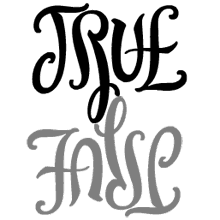


Strict inequality (!=): a != b results in true if the value a is not equal to value b OR if their types are different. Inequality (!=): a != b results in true if both values are of the same type but value a is not equal to value b. Strict equality (=): a = b results in true if the value a is equal to value b and their types are also the same. Less than or equal to (<=): a <= b results in true if the value a is lesser than or equal to value b and false if a is greater than b.Įquality (=): a = b results in true if the value a is equal to value b. Less than (<): a < b results in true if the value a is lesser than value b and false if a is greater than or equal to b. Greater than or equal to (>=): a >= b results in true if the value a is greater than or equal to value b and false if a is less than b.

Greater than (>): a > b results in true if the value a is greater than value b and false if a is less than or equal to b.

For example, 5 > 1 results in true but 1 > 20 will result in false. When you compare two values the result is either true or false, i.e., a boolean value. For example, the > (greater than) operator is used to check if a value is greater than another value. Comparison operatorsĬomparison operators are used to compare two values. Insead of learning all of the operator precedence rules in Apps Script, just use parentheses in situations like this to ensure Apps Script does whatever it is that you want it to do. (2 + 2) * 4: The addition will happen first followed by the multiplication. The expression within the parentheses will be evaluated first.Ģ + (2 * 4): The multiplication will happen first followed by the addition. You can force Apps Script perform a certain operation first by using parentheses (round brackets). These rules are called operator precedence rules. This is because Apps Script has rules for what to do in situations like this. There is only one correct answer and that is 10. If you do the multiplication first, you get 2 + 8 which is 10. It depends on which operation occurs first, doesn't it? If you do the addition first you get 4 * 4 which is 16. BTW: another good way to properly evaluate some of those boolean checks on non-boolean values, etc is to use !!x or !!!x for truthy and falsey conditions, and it also works in a = situation, Because ! = not = the opposite truthy/falsy value of the expression, it casts the expression to guaranteed boolean (negated).What is the value that gets logged when you execute the following code? = requires the value and types both be the same to determine an exact (identity) match. var comedy = where we can assume x got set to a return value of some sort, etc, versus a null/undefined… the problem with evaluating these is that a perfectly valid ‘0’ or 0 return value will convert to false, and there are a few inconsistencies with comparing nulls and undefined vs values in certain orders… Problem area is near the end of the code. Here’s my code, in case anyone wants to see what I did to find this out. Whenever I use the ‘!=’ symbol, I get the sign to go away (everything’s fine, right?), but then I’m stuck in an infinite loop.
JAVASCRIPT DOES NOT EQUAL CODE
Whenever I use the ‘!=’ symbol, I get the code running just fine but with the yellow sign on the side of the line where I’ve used it in the editor itself.
JAVASCRIPT DOES NOT EQUAL FREE
The reason I ask this is because of section 1.6, where I’m free to do whatever I want in the methods of the comedy class.


 0 kommentar(er)
0 kommentar(er)
